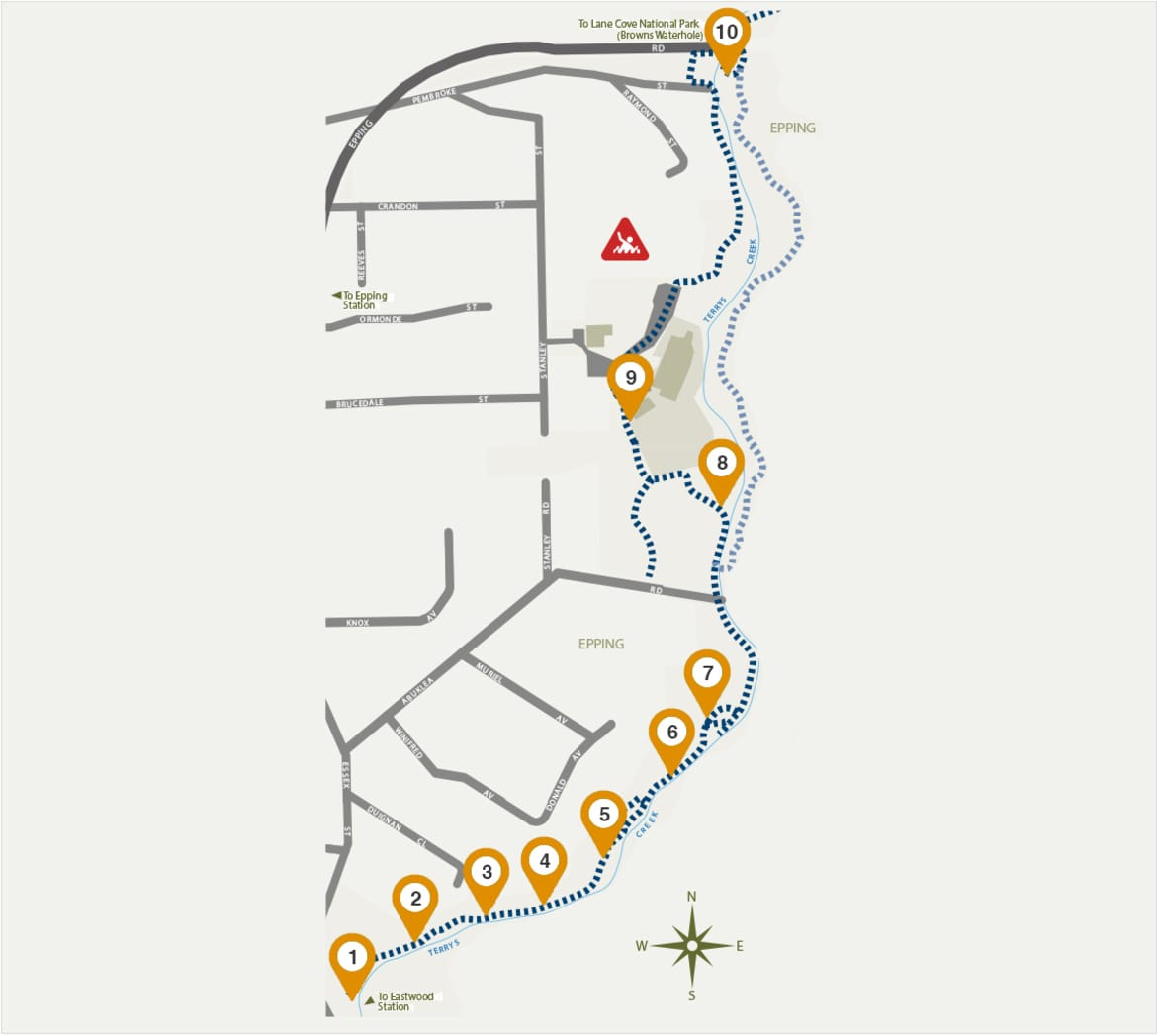Before Terrys Creek bridge was built in 1939, travellers would come down Pembroke Street, wade across the creek via a weir then wind their way up the steep slope on the other side. The Terrys Creek Bridge is listed on the New South Wales state heritage inventory as it forms an important component of Epping Road, allowing for the patterns of development of the northern and north western sector of Sydney.
A short stroll up Pembroke Street is a path to the bridge. By crossing the bridge then walking under it, the trail continues on the east of Terrys Creek to Lane Cove National Park for approximately 5.5km to Browns Waterhole. A trail on the eastern side of Terrys Creek joins the trail near the end of Abuklea Road.


